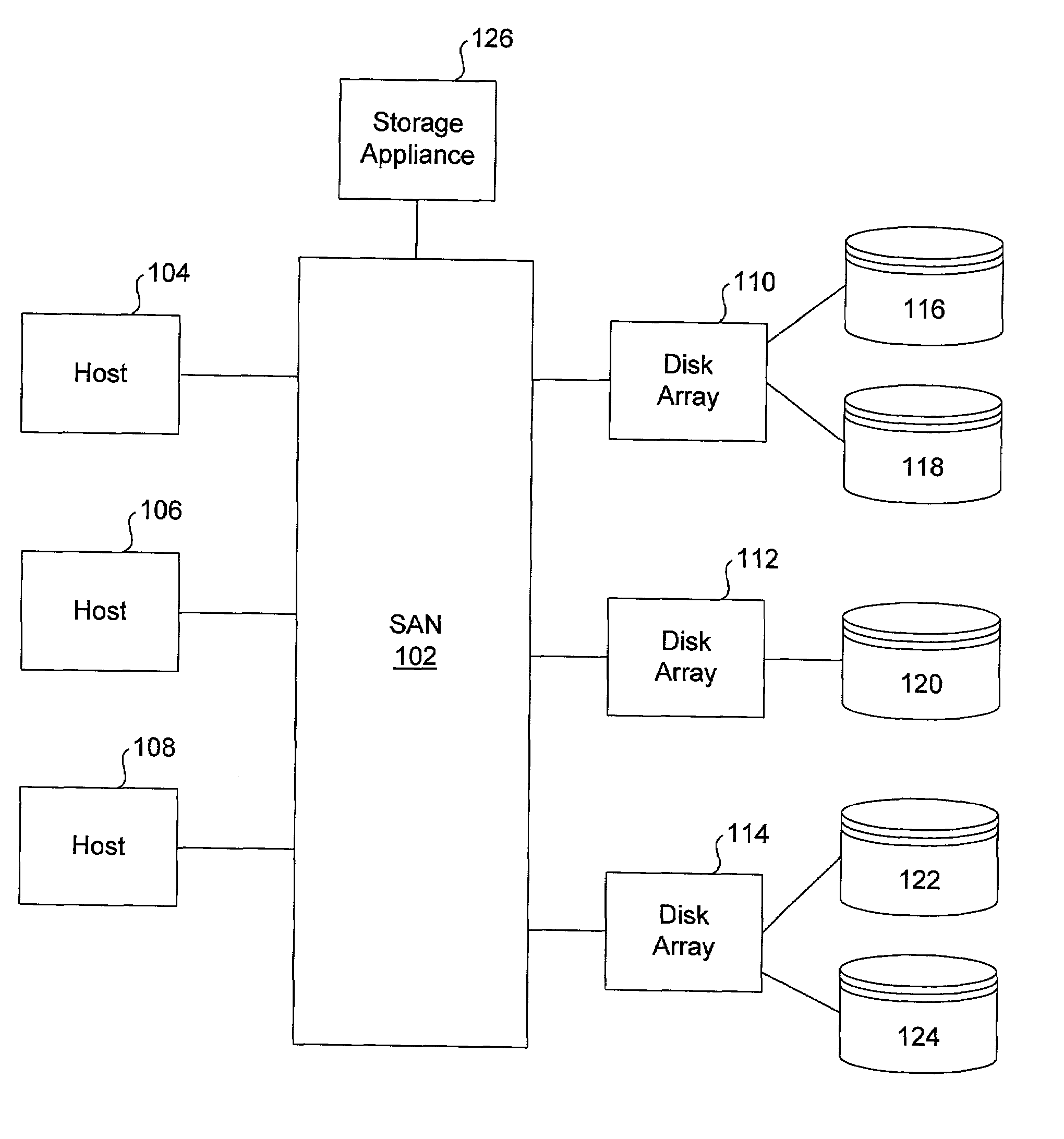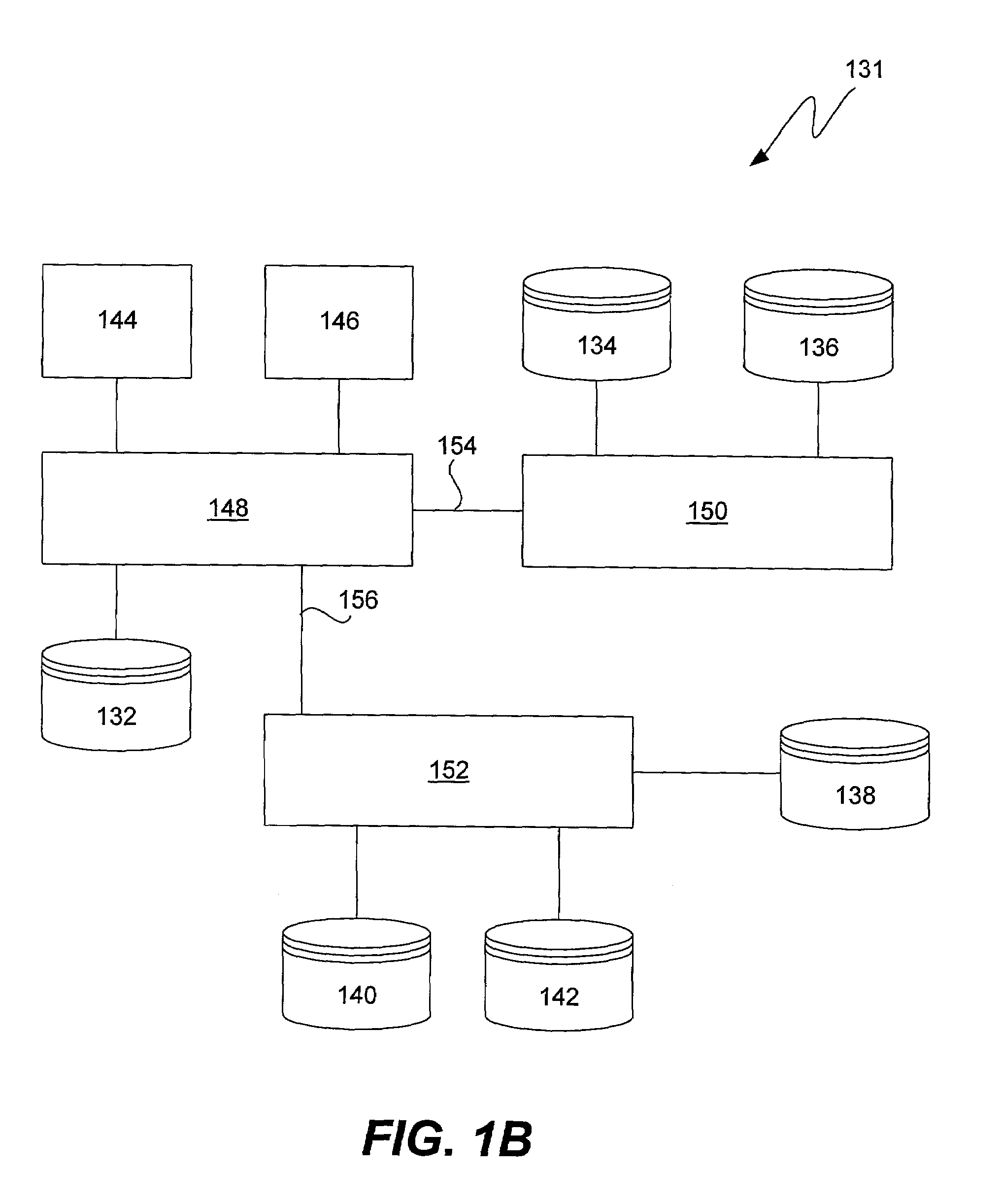Methods and apparatus for implementing virtualization of storage within a storage area network
a storage area network and virtualization technology, applied in the field of network technology, can solve the problems of data storage needs, inability to meet the needs of storage devices, and each implementation scheme has undesirable performance limitations, and achieve the effect of sufficient bandwidth for virtualization
- Summary
- Abstract
- Description
- Claims
- Application Information
AI Technical Summary
Benefits of technology
Problems solved by technology
Method used
Image
Examples
Embodiment Construction
[0033]In the following description, numerous specific details are set forth in order to provide a thorough understanding of the present invention. It will be obvious, however, to one skilled in the art, that the present invention may be practiced without some or all of these specific details. In other instances, well known process steps have not been described in detail in order not to unnecessarily obscure the present invention.
[0034]In accordance with various embodiments of the present invention, virtualization of storage within a storage area network may be implemented within one or more network devices, which will be referred to herein as virtualization switches. More specifically, a network device such as a virtualization switch, which will be described in further detail below with reference to FIG. 3A, intercepts a frame or packet and obtains information from the frame or packet (e.g., virtual address). The network device then ascertains a virtual-physical mapping from the obt...
PUM
 Login to View More
Login to View More Abstract
Description
Claims
Application Information
 Login to View More
Login to View More - R&D
- Intellectual Property
- Life Sciences
- Materials
- Tech Scout
- Unparalleled Data Quality
- Higher Quality Content
- 60% Fewer Hallucinations
Browse by: Latest US Patents, China's latest patents, Technical Efficacy Thesaurus, Application Domain, Technology Topic, Popular Technical Reports.
© 2025 PatSnap. All rights reserved.Legal|Privacy policy|Modern Slavery Act Transparency Statement|Sitemap|About US| Contact US: help@patsnap.com



